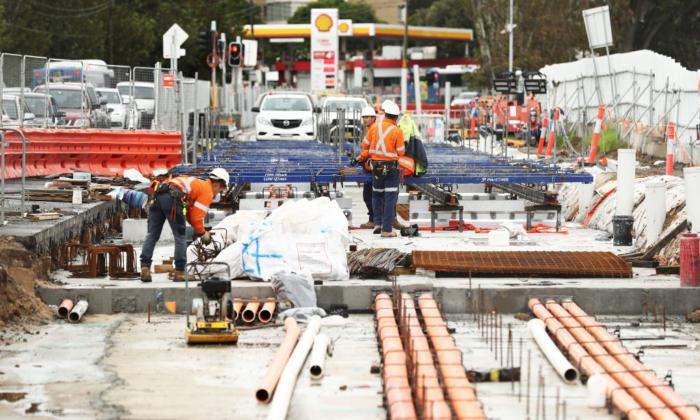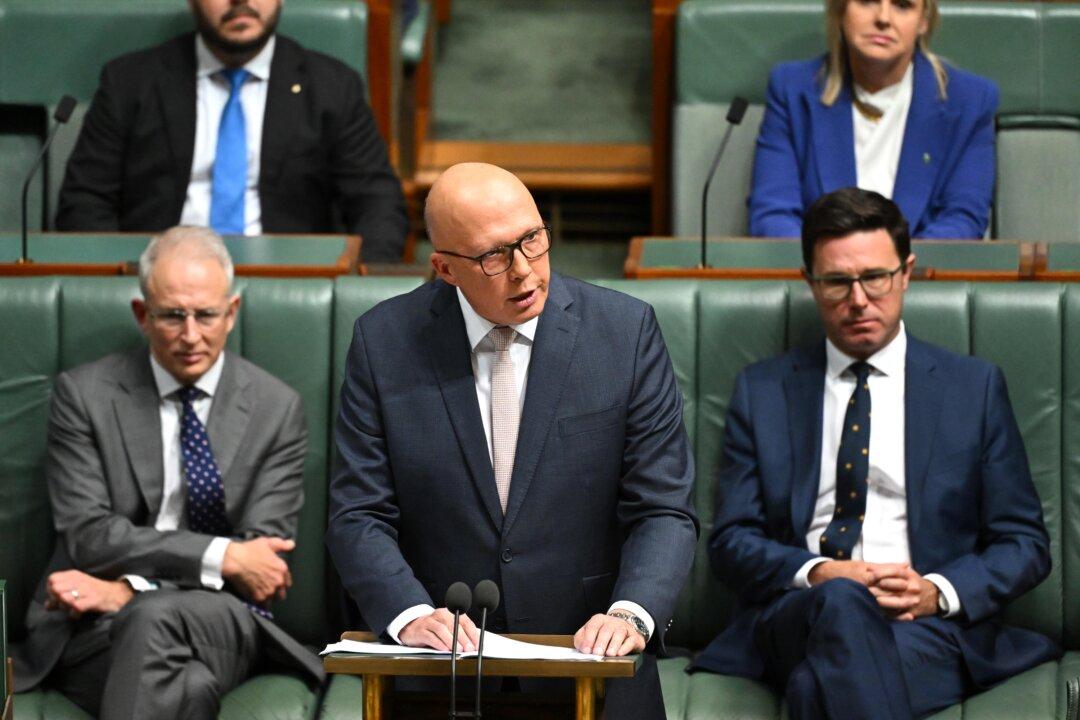The bulk of the article spelled it out.
The state (private interests as well as state and Commonwealth governments) has committed to more infrastructure than the materials and resources available.
At the one time, they have committed not just $10 billion (US$6.35 billion) for hospitals, but $12 billion for the 2032 Olympics, $19 billion over four years for the energy transition, and $32 billion for road infrastructure.
This is in an Australian state with a gross state product of just $363.5 billion. The excess of demand is blowing out costs and timelines.
This is typical of what is happening around the world, and is not unique to this state government, this federal government, or even this country.
It is part of the reason for the housing affordability crisis. In a normal market, projects would be deferred or cancelled because costs would become too high for an economic return.
But this is no ordinary market—it is driven by government demand and fuelled by the government’s superior ability to borrow.
There are no profit constraints on governments.
If they’ve promised the project and the price doubles, they just spend up. Poor project management means prices are guaranteed to balloon, and consultants and contractors price low to win contracts knowing they can charge full freight for variations.
And there is a pun intended on “full freight.” An example of this in action is Cross River Rail in Brisbane which has already had a 40 percent overrun due to variations caused by poor project management.
The debt blowouts started happening before the COVID lockdowns but went stratospheric during them.
The Commonwealth government has increased borrowings to somewhere around $800 billion by 2030.
State governments have followed, with Victoria the worst offender with gross debt of $239 billion by 2026-27, followed by Queensland with $132 billion by 2023-24, and the country’s most populous state New South Wales (NSW) with $130 billion by 2023-24.
Queensland has ameliorated its need to borrow by stealing (and I use the word advisedly) $15 billion in 2022-23 from the shareholders of coal mining companies through a super profits tax which makes it the highest-taxing mining jurisdiction in the world.
Queensland’s coal royalties give it even more power than usual to price private sector competitors out of the construction and housing market.
By “private sector competitors” I’m specifically thinking of house buyers, although it damages business, employment, and general economic health as well.
Yes, this construction gluttony by the government is feeding into the housing crisis as it makes new builds much more expensive. Not to mention extending the time to build forces construction companies to carry more equity on their balance sheets and charge higher prices—over and above the increase in labour and materials—to restore profit margins.
Colossal Social Welfare Programs That Will Never Go Away
These trends don’t just exist in the construction sector, but throughout government with demands increasing faster than resources in the social service sector as well.The government admits they need to rein in the National Disability Insurance Scheme (NDIS), even though they have no idea how. The Disability Royal Commission has made recommendations that will demand higher levels of resourcing for the disabled, with no evidence they will create better outcomes.

We used to have a lot of family day care, where carers used their own homes which provided competition to childcare centres, but these have largely been strangled by regulation.
And on it goes.
Governments demand that things be done, because they sound good, and win votes, not because they can actually be delivered—just like the energy transition where you can easily get to 25 percent penetration of renewables, but where 100 percent is completely utopic, no matter how many media releases you write.
Once these fantasies were kept under check by finance ministers, debt constraints, and the need to fund them out of taxation over the average business cycle. There was the occasional boil-over, but nothing like what we are seeing now.
What changed was stupidly low interest rates—thanks to reserve banks of the world, including our own—and the idea that governments could borrow as much as they want to do whatever they want (take a bow Modern Monetary Theory).
This allowed politicians to think they could indulge every whim of any pressure or focus group, as well as build whatever monument to their own preening pre-eminence they wanted.
From Risk Aversion to Risk Avoidance
The pressure and focus groups are driven by a number of tides.There is a lack of institutional opposition to spendthrift policies. Liberals, the traditional centre-right party in the country that notionally believes you don’t spend what you can’t afford and don’t borrow what you can’t pay back, gave up on those ideas—so half the argument vacated the public square.
Former Liberal Party federal Treasurer Josh Frydenberg threw money at people during COVID, while former Liberal Premier Dominic Perrottet embarked on the largest infrastructure binge in NSW’s history.
Increasingly fractured and hysterical media—mainstream, digital, and social—form echo chambers that feed into the safety-ism, reinforcing the idea that “something must be done.”
So, regulations are introduced, or practices banned, often on the say of victims of occasional harm, whose experience cannot be questioned but whose expertise in diagnosing and curing the harm is likely no better, or even worse, than anyone else’s.
Above-averageism is another trend. Radio host Garrison Keilor in the introduction to his Prairie Home Companion monologue used to talk about his “hometown” of Lake Woebegone, where all the children “are above average.”
The Ultimate Culprit Is Equity
The last trend is the really mega one, and it is the increasing dominance of equity over equality.Equality is the idea that everyone ought to be treated as having equal dignity.
Equity is the idea that outcomes for everyone ought to be the same. Not in every way. Some people are still allowed to be better looking than others (although body positivity is trying to curtail this), and others can play sport better, or perform music better.
But when it comes to money, equity says there is a problem if some have more than others, even if the others haven’t put much effort in.
So instead of people accepting the unequal positions they find themselves in because of life choices or accidents—and doing the best they can with them—there is an attempt to nudge us all to the mean or above by forcing someone else to bear our unequal costs.

Much inequity arises through accident, but the attempt to cure that inequity often costs more resources than exists in the community.
It saps individual responsibility and individual effort and creates a wider scope for the government, further reducing the opportunity for individual effort.
It manifests in things like price caps which may work short-term to make life easier for customers, but in the long-term, discourage supply and increase prices.
Can We Put Solutions to Action?
When will this mess be cleaned up? Only when we relearn the lessons of the past, and value politicians who say No.How will this happen? Unfortunately, it normally only happens through a crisis.
The 80s and 90s were a time when Australians stood up straight and made the economic changes they needed to become one of the world’s leading economies.
That might not have happened if it had not been for the 1983 recession, which had its roots in Labor Prime Minister Gough Whitlam’s magnificent and wrong-headed extravagant three years.
If you research that time period, you’ll find that 1974, the year before Mr. Whitlam lost, was a boom time with lots of shortages. Then, there were the tough times of 1975 which ushered in a change of government with Malcolm Fraser winning in a record landslide.
Yet it took two decades, and both sides of parliament, to put things back together again after that.
Let’s hope the politicians of today on all sides are capable of relearning old tricks because they’re doing a good job of creating the dire conditions of the past.
There is really only one path ahead for us, and we see it all around us in the countries we left behind as we briefly became the 10th largest economy in the world in 2010 with only 0.33 percent of global population.
If we don’t change our ways, we will simply slide back to join the rest of the pack—we’re already back in 13th place already.







